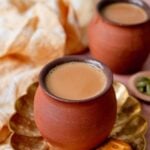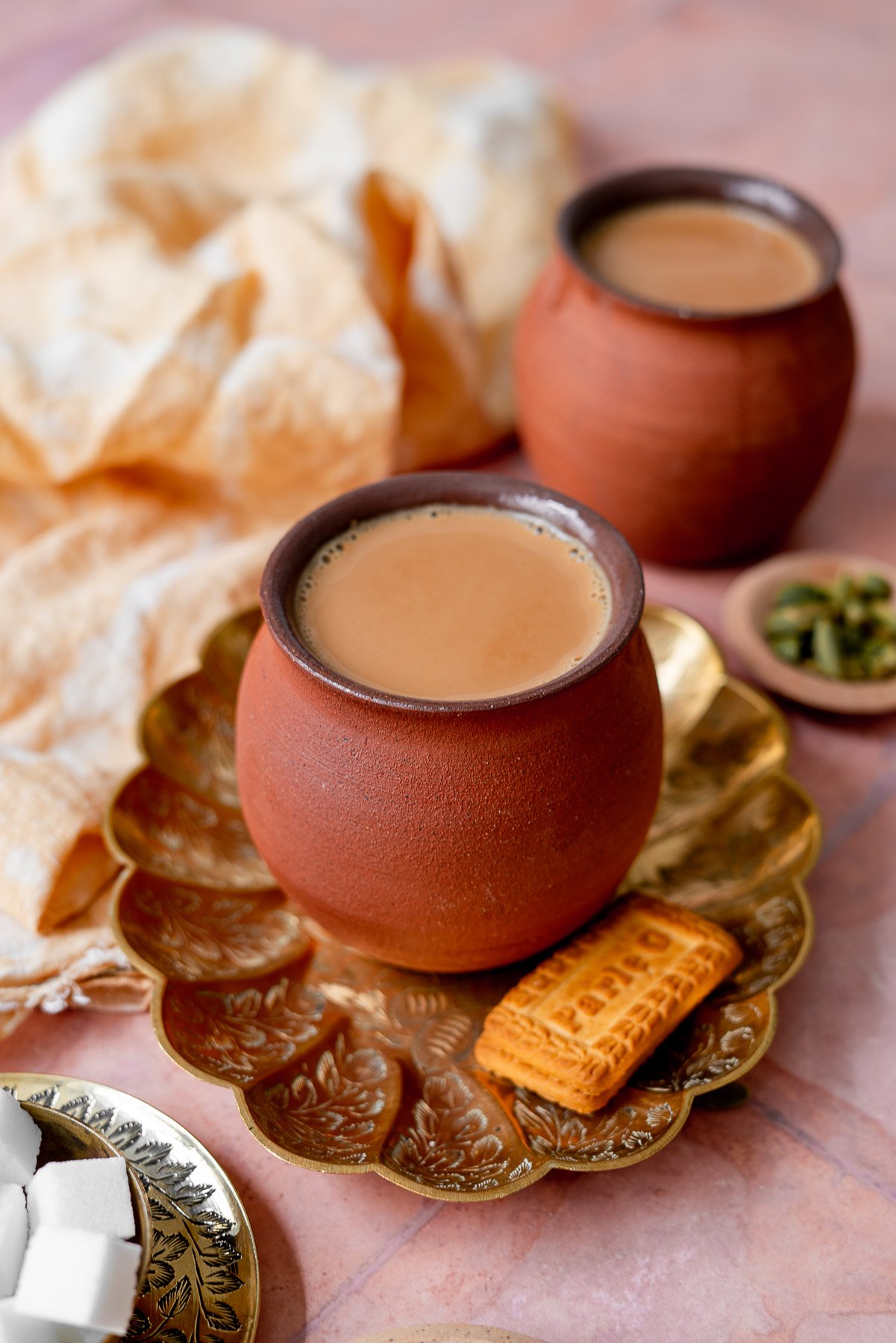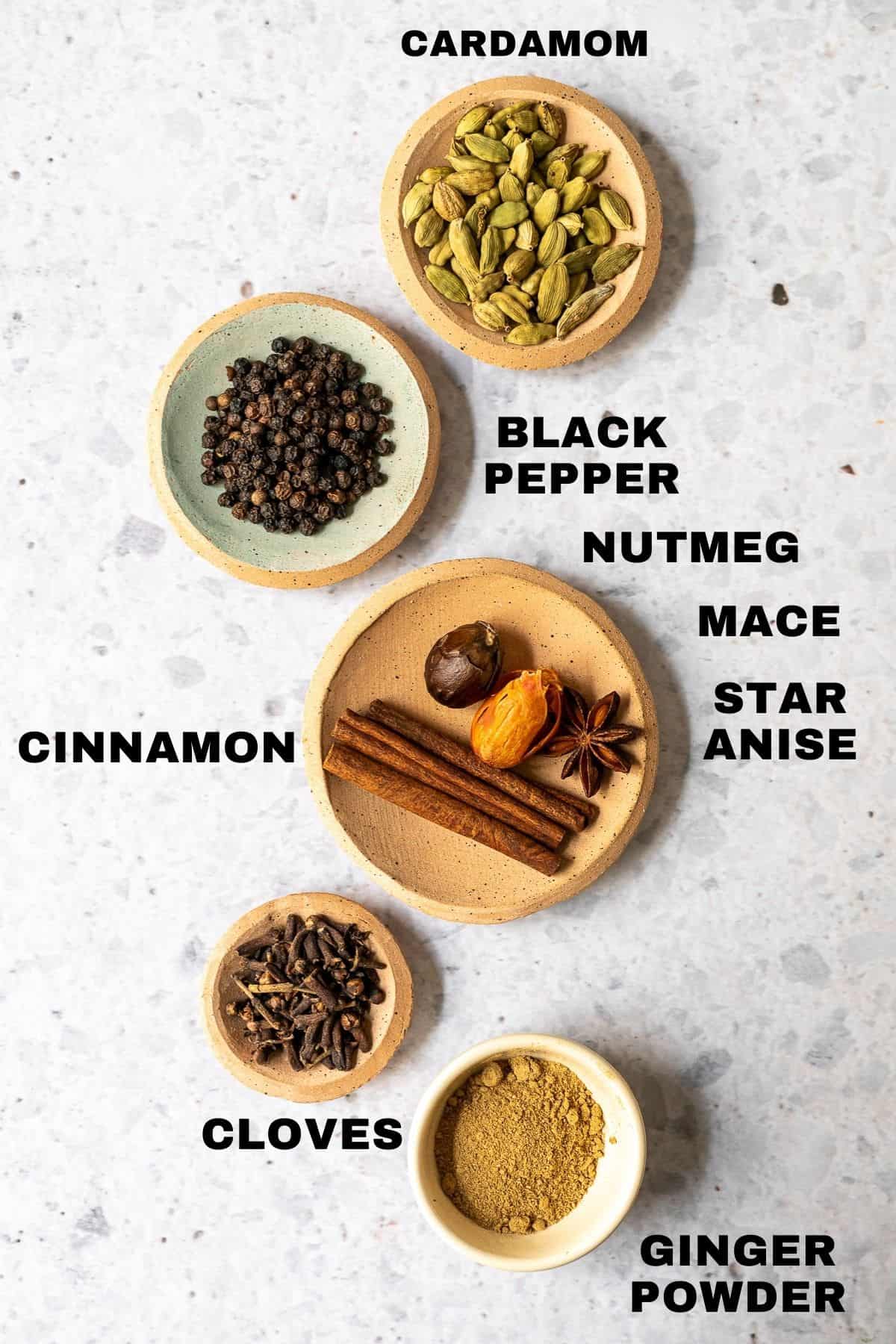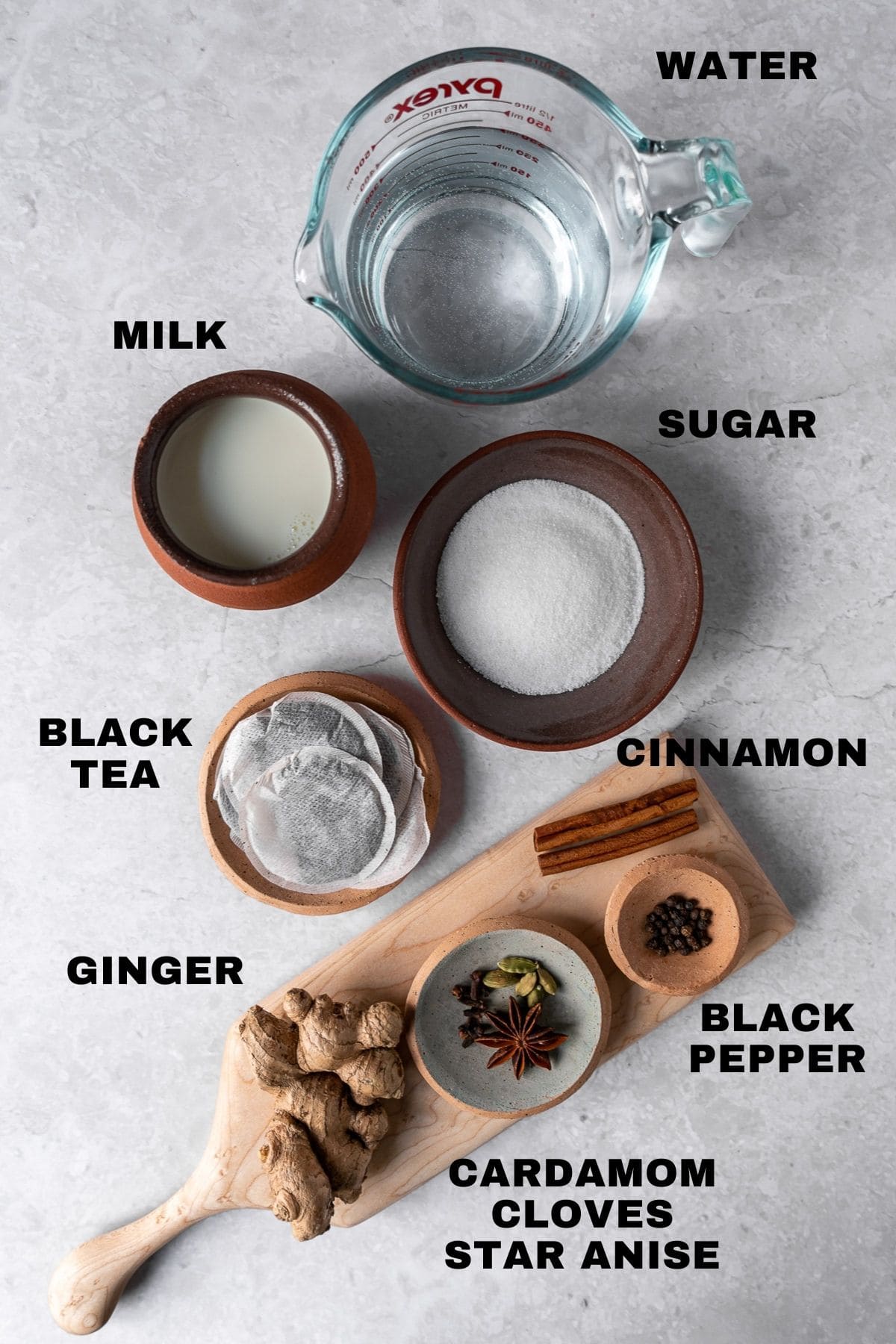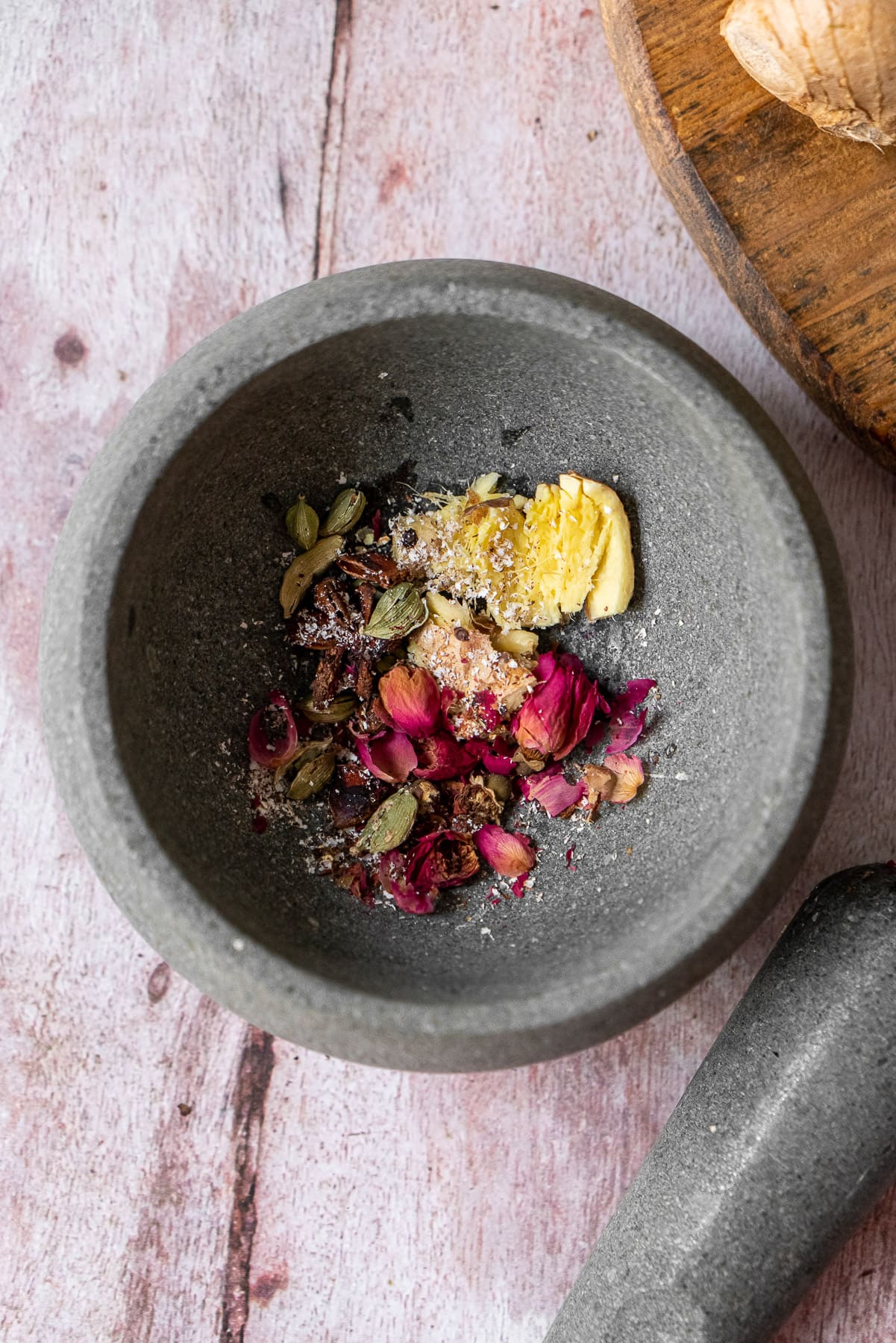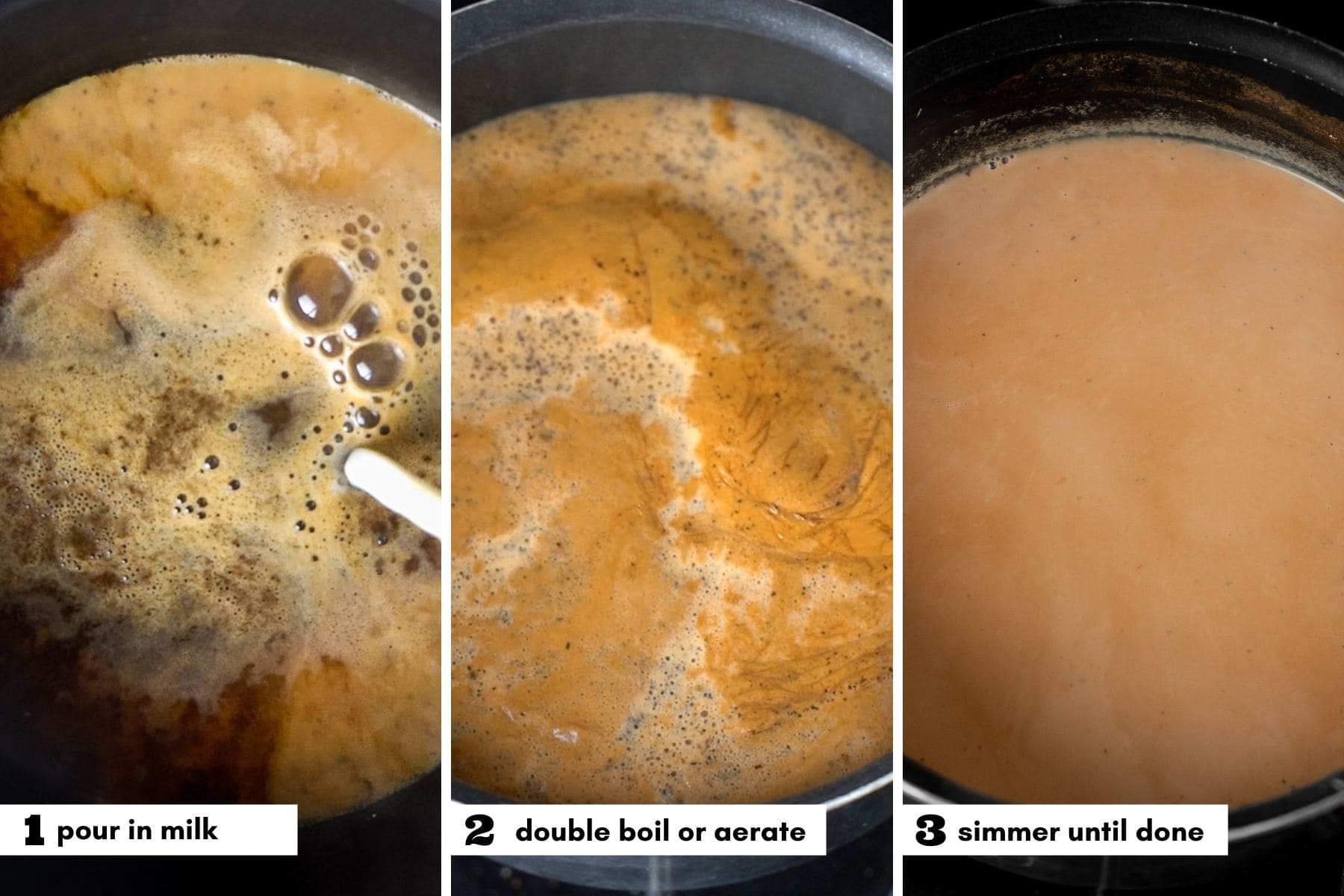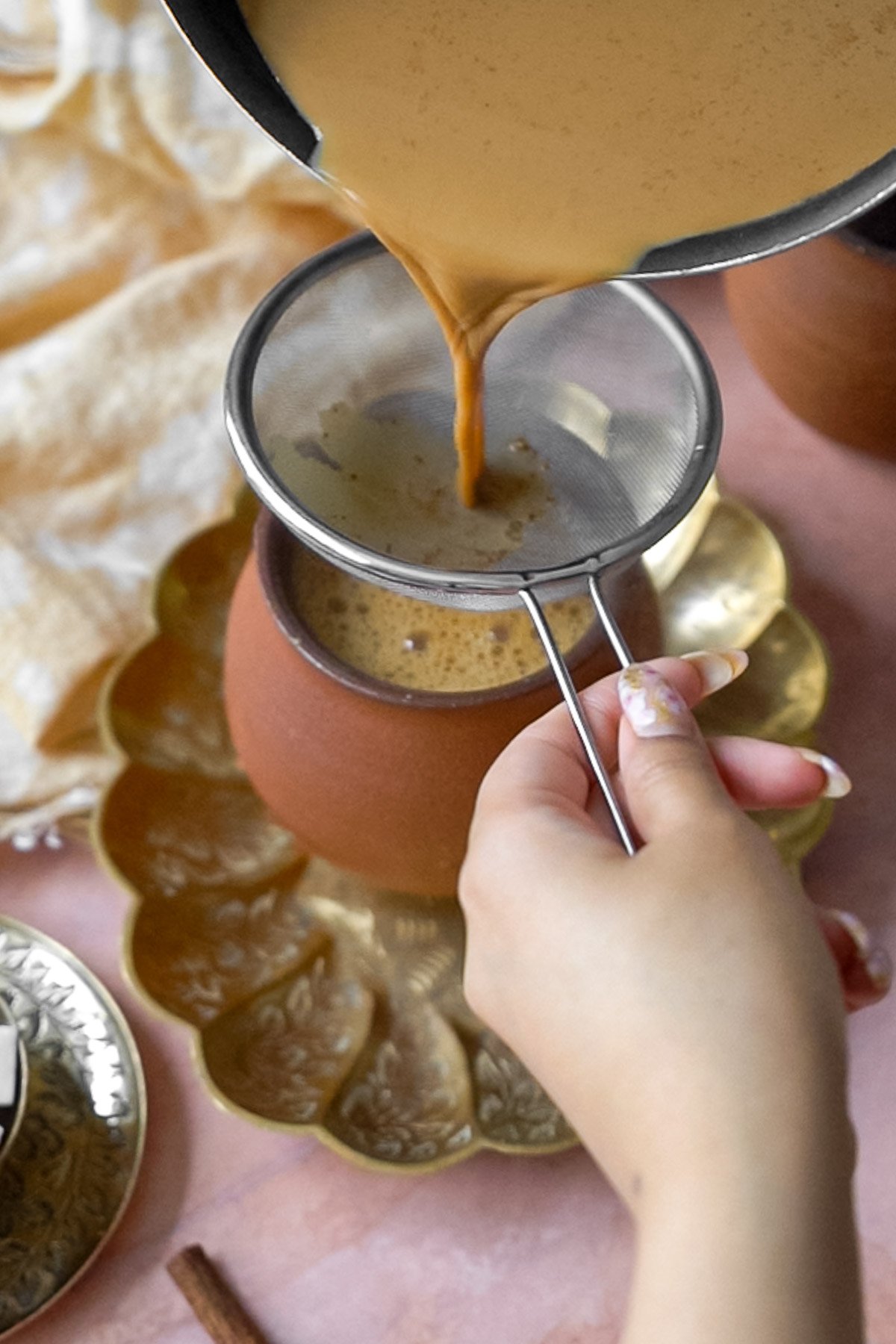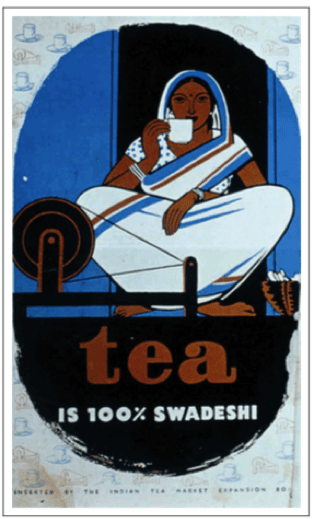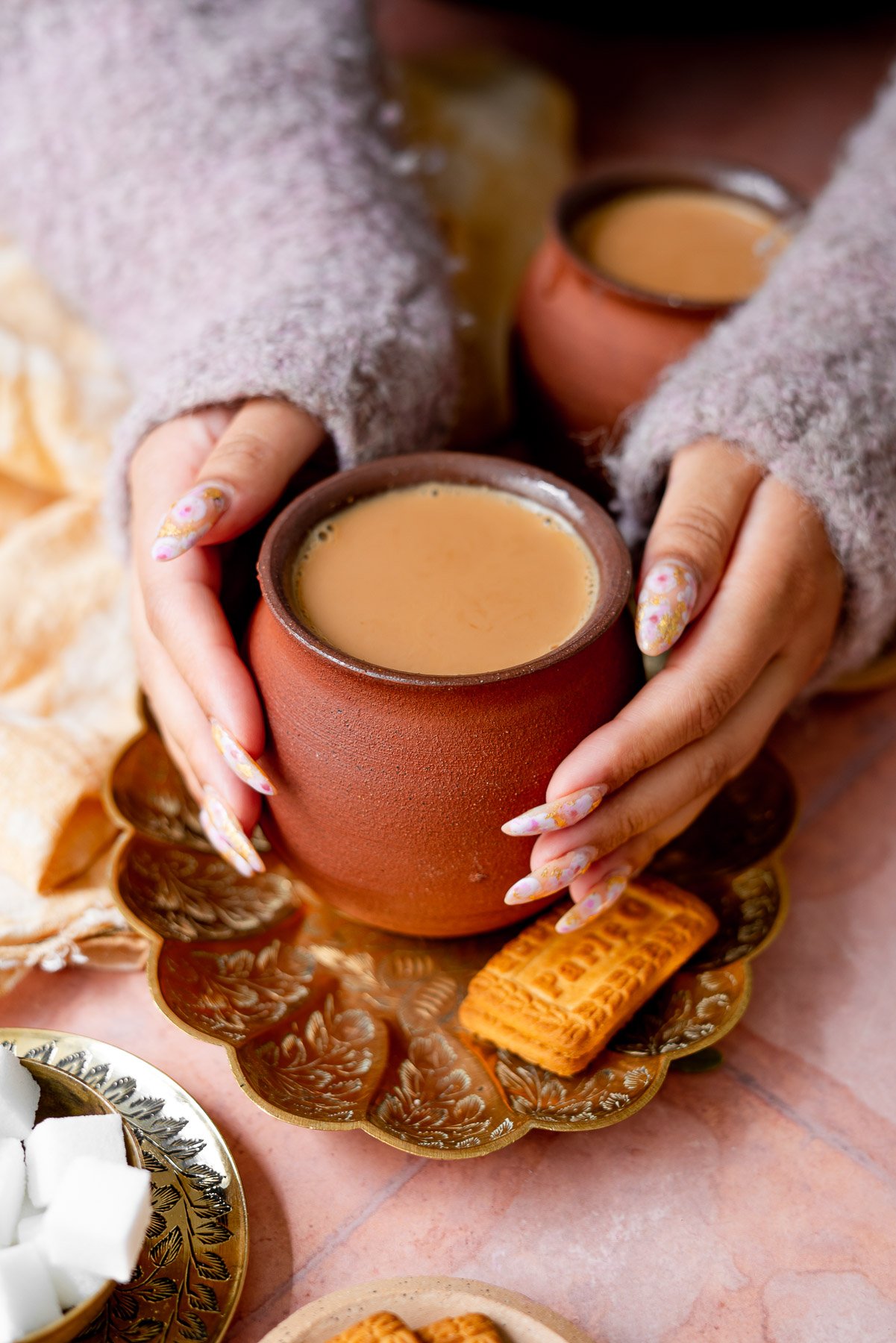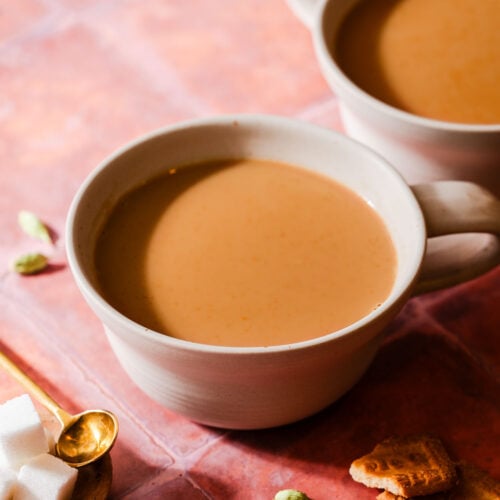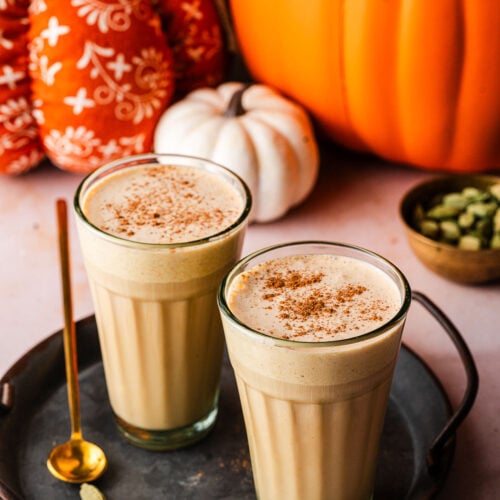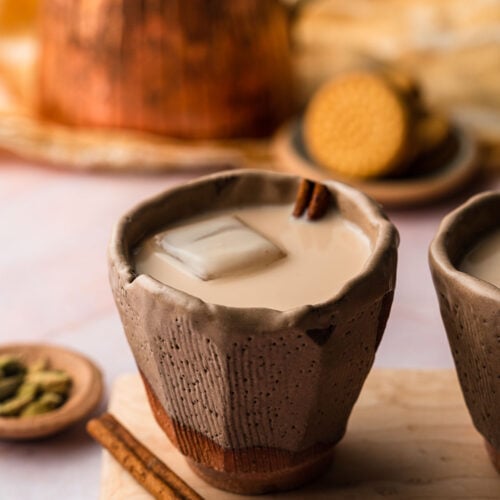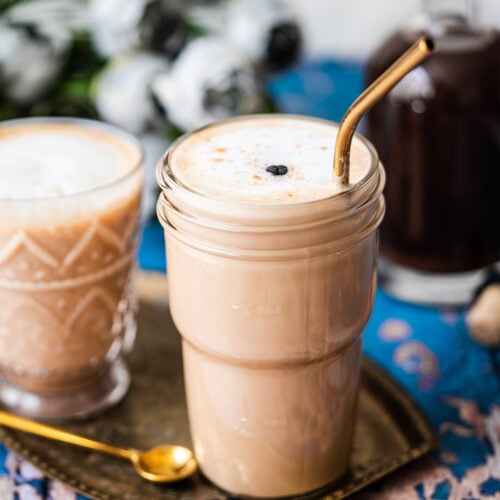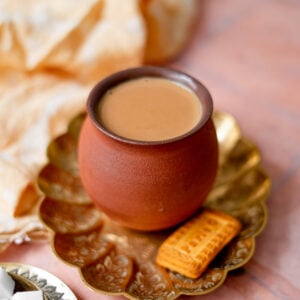Why this Recipe?
What is Masala Chai?
Which Spices are in Chai?
Ingredients - Notes and Substitutions
☕ How to Make Masala Chai
A History of Masala Chai Rooted in Colonization
DID YOU KNOW?Masala chai originated in the 1900s during the British colonization of India when chaiwallahs (street vendors selling chai) began adding spices and milk to tea. China had a monopoly on the European supply of tea, and the East India Trading Company had a monopoly on Chinese tea in England. Once China restricted the export of tea, the British were desperate to find another source. They discovered tea in Assam that was almost identical to that in China. The British began cultivating tea in 1838 at plantations in Assam using cheap Indian labor. (Source: A Thirst for Empire: How Tea Shaped the Modern World)Due to the lack of knowledge on processing and transport, the tea produced was incredibly low quality, crop yields were low, and export outside of India was difficult. The Indian Tea Association, made up of British tea planters, decided to promote tea drinking to a wider audience to maintain their profits. My addiction to chai started with my dad’s obsession - three cups a day to keep him going even in the unbearable Arizona heat. I’d watch him come alive in the early mornings as he peacefully enjoyed his first sips, slam down another cup after a solid afternoon nap, and yet another when that evening headache screamed for more caffeine. Chai has always been a huge part of my life so this detailed recipe is well-tested and quite honestly, perfect. You’re going to love it! But maybe your in-laws asked you to make everyone chai and the pressure is on, or your parents never taught you how. Maybe you had an incredible cup at an Indian restaurant or a Chai Tea Latte at a local coffee shop and want to make your authentic chai! It’s enjoyed in the Indian subcontinent in the mornings, afternoon, and in the early evening for a burst of caffeine or some cozy relaxation. Chai is typically served with Parle-G biscuits or cake rusk. We do a quick dip to soak up the chai and eat it before it falls into the mug. Chai is a way of life for us and a deep part of Indian culture. It’s a quick cup when visiting someone, or spending time at the jewelers and clothing shop. It’s symbol of hospitality while catching up with friends and family. It’s stopping on the side of the road during a road trip to grab a cup for ~ energy ~. You can try several different ready made masala chai blends with the tea and aromatic spices already measured out, chai spice blends, or chai tea bags and the flavor profile will be wildly different depending on the tea blend. A lot of this is due to regional variety and even classism when it comes to spices. For example, cardamom is one of the most expensive spices in the world trailing behind saffron and vanilla. Some families keep masala chai as simple as black pepper. The point is, even if you don’t have every spice you can still make the best cup of masala chai! Don’t let that deter you. Some other recipes include allspice due to the notes of cinnamon, cloves, and nutmeg. Allspice isn’t a blend of spices, but actually a berry. Either way, I’d stray away from using allspice if you’re looking for an authentic Indian recipe. Use whole spices where you can. Whether you put the spices directly in the chai, break them apart a bit in a mortar and pestle, or grind them into powdered chai masala using a spice grinder… using fresh crushed spices in small batches results in the best chai! Grinding the spices will result in slightly stronger, pungent chai. The spices will be strained out at a later point. Any of your favorite milks or creamers will work, but boiling the milk along with the tea leaves and spices is key for the creamy consistency. Otherwise, Assam and Darjeeling tea work best as alternatives, and English breakfast is a good runner up. I do not recommend earl grey. Some families even make their own blend of tea - my dad does a blend of loose leaf black and green tea. Ginger - I like for the ginger to be subtle in my chai, so I’ll use one or two thinly sliced pieces of ginger. If you want a stronger taste, grate or crush the ginger in a mortar and pestle. If you’re using honey or maple syrup, stir it in while the chai is off heat but still hot. Sugar can be mixed in while making the chai or according to preference when serving. Most families make Masala Chai with whole spices. It has the best flavor, so this is the method we’ll go over. Boil the water. Place a stainless steel or nonstick saucepan over high heat and add the water. Add a ¼ - ½ cup of water if your saucepan or pot has a large diameter to account for evaporation. As the water comes to a rolling boil, add the spices and ginger so they can begin to release their flavor. Once the water comes to a boil, add the tea leaves or tea bag. Reduce the heat to low to medium. Let the tea steep with the spices for 2 minutes, no longer to prevent bitter tea. Then, add your choice of milk. Pro tip: Using a stainless steel small saucepan is best for making Masala Chai. Towards the end, you’ll notice a bit of the milk may have burned or the tea leaves and spices are stuck to the side. This way, you can easily scrub off residue with a steel brush while washing dishes.
One is the double boil, which is notorious for causing the biggest mess. Bring the chai to a boil on high heat. The level will rise until it’s almost to the top, then quickly lift the pot off the heat until it comes back down or immediately lower the heat if you have a gas stove. This is the first boil. Repeat it for a double boil. Be sure to watch the chai closely otherwise you’ll have a spill on your hands. Another hack is to put a wooden spoon over the top of the pot so that once the tea hits the spoon, it won’t boil over. The second way is to pull the chai which is used by chaiwallahs (chai vendors) in India. Use a small cup with a handle or ladle to scoop some chai and pour it back into the pot from a height to create bubbles. Repeat this a few times.
Pro Tip: If your chai doesn’t have a lot of color or isn’t strong enough, add some more tea leaves and continue to simmer until you’re satisfied. Chai is very forgiving. Or as we say “kitna cheeni? (how much sugar?) ek spoon ya do? (one spoon or two?)”. Serve with Parle-G biscuits or cake rusk. The way chai was served in the 1900s was rooted in classism. British tea drinkers used porcelain, upper class Indians used stainless steel, common folks used clay cups called kulhad, and others drank from saucers. Today, people in India still use kulhads or small glass cups, leaving space at the top for holding on to so their fingers aren’t burned.
Milk-to-water ratio - Chai should have 2 parts water to 1 part of milk, but if you want it milkier then go with a 1:1 ratio. Whole Spices - Use whole spices that are a bit crushed for the best results. This helps release their oils and flavors the tea more. Using chai masala can result in little grains at the bottom of the cup that may be texturally unappealing. Fresh Ginger - Fresh ginger has enzymes that can curdle milk. It’s best to boil the water with the spices, including ginger, before adding the milk. Alternatively, use dried ginger or ground ginger. Rehydrate spices - Boiling the water with tea and spices before adding milk allows the spices to rehydrate and release flavor. Alternatively, get the water to a scalding hot temperature and then add the spices. Ratio of Spices - Ultimately, it’s up to you to choose the amount of each spice to use. You could omit all the spices except for the cardamom, or you might want your chai more peppery and add more black pepper. You might want ginger chai and add a lot more ginger! Maybe you LOVE a Starbucks chai latte and add more cinnamon. The spice blend is based off of your preference. Go easy on the cloves - Cloves tend to be really really strong, you only need 1 or even half of a clove. A lot of desi households make their own chai masala with minimal cloves because it can overpower the tea completely. Malai - The film layer that appears at the top of the chai is completely normal and especially shows up when using whole milk. Just mix it back into the chai.
More Tea Drinks to try
Recipe
Obviously, that didn’t work since masala chai still exists today thanks to the rebellious chaiwallahs that stuck to it. And if you love chai, try Chai Syrup, Chai Concentrate, Chai Spice, Masala Chai Canelés, Chai Liqueur, Adrak Chai, and Chai White Russian. I’d love to know what you thought of this recipe! Don’t forget to leave a comment and ⭐️ star rating below! Thinking about making this recipe? Enter your email and I’ll send it straight to your inbox to save for later. Plus, get new recipe inspiration from me every week! By submitting this form, you consent to receive emails from Masala and Chai.
